Recent Articles
Popular Makes
Body Types
10 Hyundai Tucson Competitors to Consider
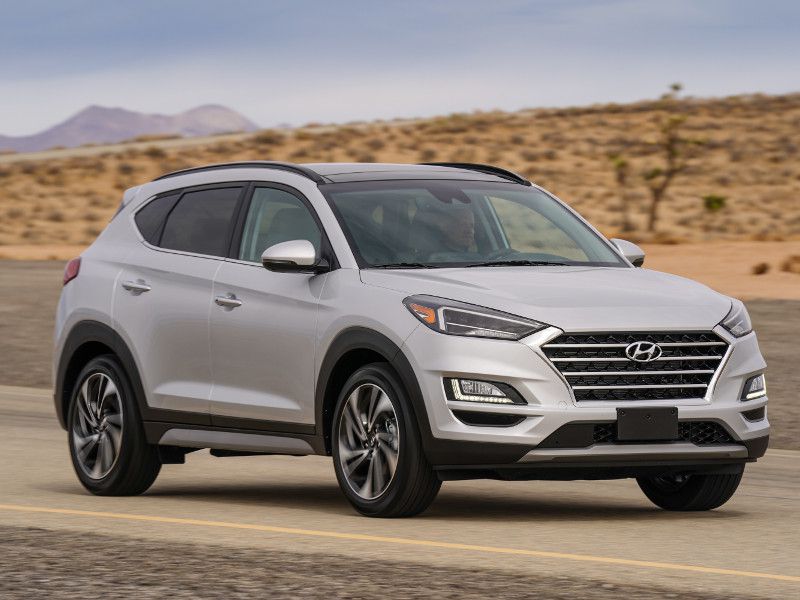
2019 Hyundai Tucson ・ Photo by Hyundai
The 2019 Hyundai Tucson has a lot to offer today’s customers. For one thing, the Tucson was just refreshed for this year, with a sharper design and more standard safety technology. Hyundai also serves up high-comfort touches such as heated front and rear seats.
But if you’re looking for Hyundai Tucson competitors to consider, we’ve got good news: As impressive as the Tucson is, there are other vehicles that provide their share of unique advantages. This includes achieving significantly higher fuel-economy grades than Hyundai’s small SUV. And despite the Tucson’s long list of technologies, some competitors still deliver more. It’s the same story for SUV-style functionality: You can also find similar-sized SUVs with more towing power and higher levels of off-road capability than the Tucson.
2019 Hyundai Santa Fe
The first thing you should keep in mind is that there are important Hyundai Tucson competitors to consider right at the same dealership. These include the 2019 Hyundai Santa Fe, the brand’s mid-size SUV. To be clear, the 2019 Santa Fe is the all-new replacement for the 2019 Santa Fe Sport. (Last year’s Santa Fe, a larger three-row crossover, becomes the 2019 Santa Fe XL.)
The point is that the 2019 Santa Fe lets you compare the Tucson to a vehicle in the next-highest size class. For instance, the Santa Fe can supply 10 more cubic feet of cargo space, a 3,500-pound trailer rating, and a similar package of content — albeit with a higher price tag.
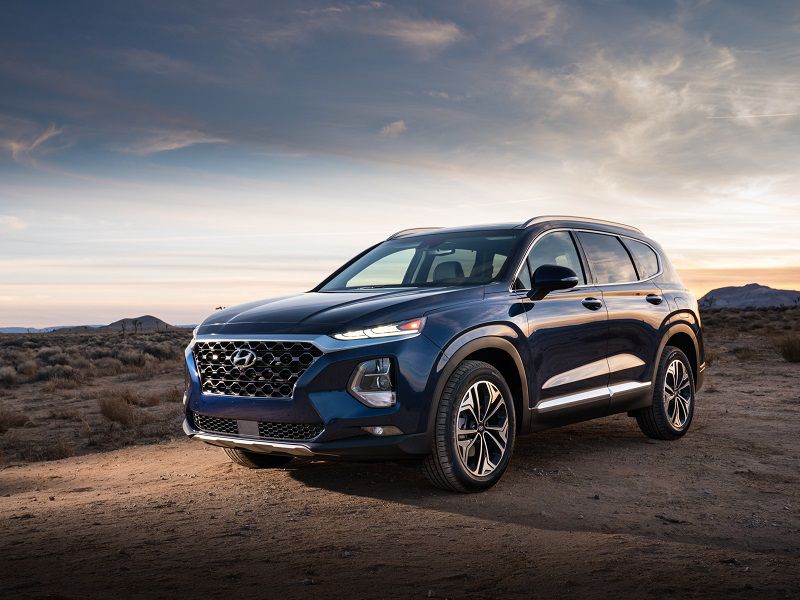
Photo by Hyundai
2019 Jeep Compass
If you’d prefer something more rugged, one of the top Hyundai Tucson competitors to consider is the 2019 Jeep Compass. Certainly helping matters, the entry-model Compass Sport is available with a new Upland package for 2019. This includes key design elements from the lineup’s most capable Trailhawk model. You can also opt for the Compass Trailhawk itself.
Now, the Compass will cost you a bit more when it’s configured with Jeep’s most hard-core off-road hardware. But you can’t get the Jeep’s capability at any price with the Hyundai. The Compass also offers its share of cutting-edge technologies. Leading the way are automatic emergency braking, a blind-spot monitoring system, lane-keeping assistance, an 8.4-inch touchscreen, Android Auto/Apple CarPlay, and a sound system by Beats Audio.
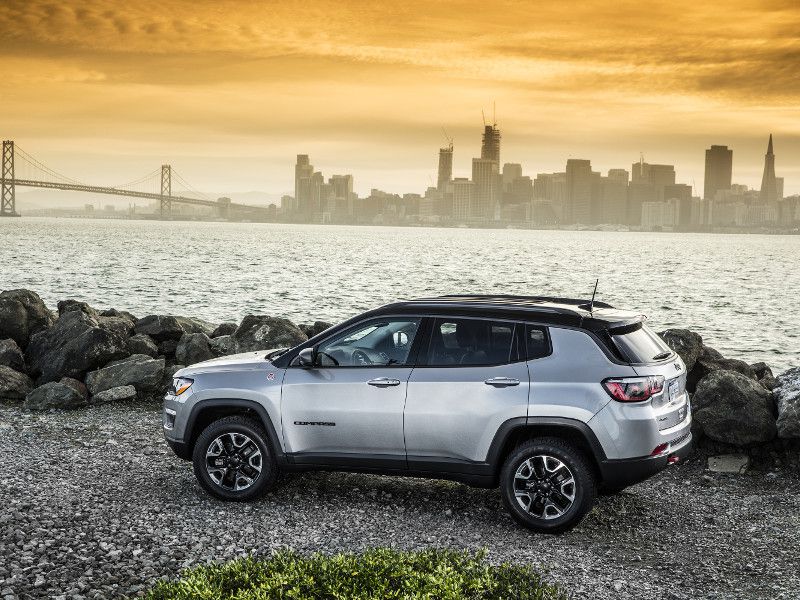
Photo by Jeep
2018 Ford Escape
The 2018 Ford Escape has some key advantages over most other Hyundai Tucson competitors. Now, it’s true that the Escape is a bit more expensive than the Tucson. Yet the Ford is also a slightly larger vehicle with nearly 10 percent more total cargo space.
The Escape gives you access to a lot more power, too. With Ford’s 2.0-liter turbocharged EcoBoost engine on board, you can take advantage of 245 horsepower and 275 pound-feet of torque. The Tucson’s strongest engine trails those numbers by 64 horses and a full 100 pound-feet of torque. That difference then impacts towing capability. The Escape can pull up to 3,500 pounds with its top-level powerplant, while the Tucson isn’t rated for towing at all.
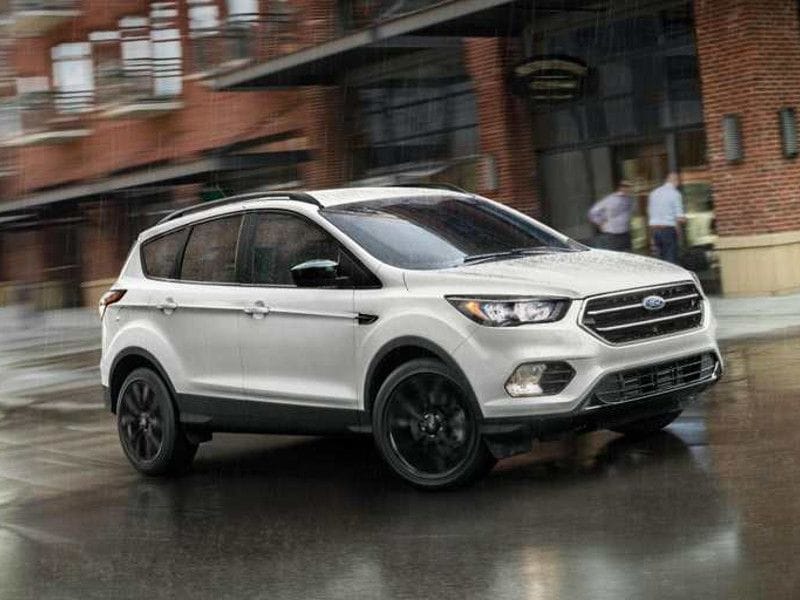
Photo by Ford
2019 Subaru Crosstrek
Among the most appealing Hyundai Tucson competitors is the 2019 Subaru Crosstrek. Right off the bat, the Crosstrek has a lower MSRP even though it comes standard with all-wheel drive. Adding that to the Tucson will add significantly to its bottom line as well.
Next, the all-wheel-drive Crosstrek is significantly more fuel-efficient than both the all-wheel drive and the front-wheel drive Tucson models. The EPA rates it at 27 mpg in the city, 33 mpg on the highway, and 29 mpg combined, compared to the most-efficient Tucson's ratings of 23 city/30 highway/26 combined. Subaru can also supply driver-assistance technologies that you can’t order for the Hyundai Tucson. For example, both vehicles are available with automatic forward braking, but only the Crosstrek can complement that with automatic reverse braking.
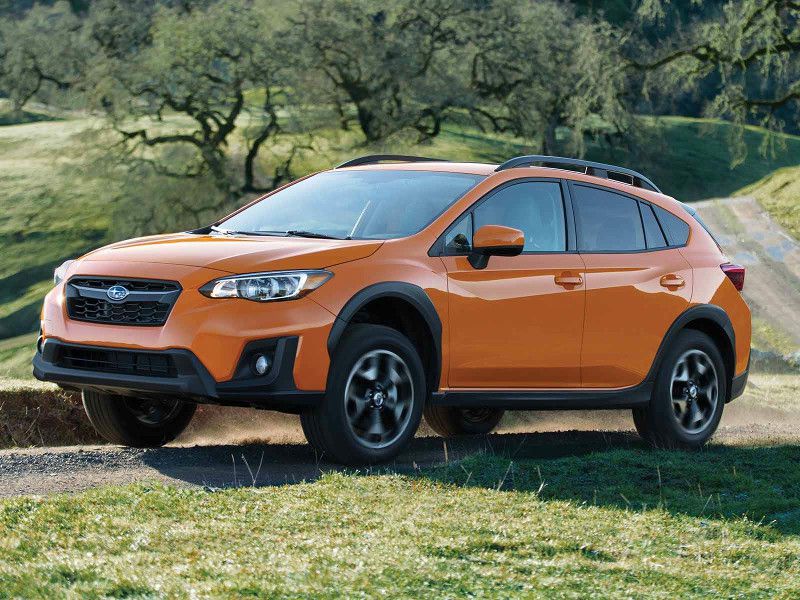
Photo by Subaru
2019 Dodge Journey
Naturally, most of Hyundai Tucson competitors come from the same segment: It only makes sense to compare one compact SUV against another. Yet if you’re shopping primarily on price, the 2019 Dodge Journey lets you enjoy a mid-size alternative for about the same cost.
The Journey does ride on a somewhat dated platform, but it’s also available with modern cues such as LED taillights, a rearview camera, and a navigation-based infotainment system with an 8.4-inch touchscreen. From a functional standpoint, the Journey provides more cargo space, more towing power, and more engine output, thanks to an optional 3.6-liter V6 that’s good for 283 horsepower and 260 pound-feet of torque.
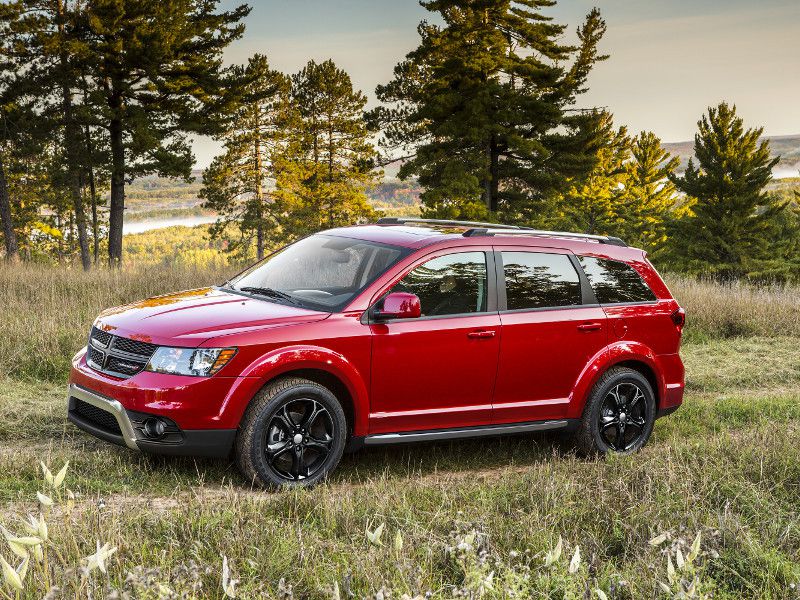
Photo by Dodge
2018 Kia Niro
Kia actually has two good Hyundai Tucson competitors to consider. You can certainly check out the 2019 Kia Sportage, which is built on the same platform as the Tucson but features unique Kia content.
However, we suggest the 2018 Kia Niro. The Niro is a tad smaller than the Sportage or Tucson, and it takes a different approach to the segment. Here, Kia skips the optional all-wheel drive system that’s found in typical SUVs. The Niro instead shows off a standard hybrid powertrain. As a result, you can achieve very untypical EPA ratings that go as high as 52 mpg city/49 mpg highway/50 mpg combined — almost twice as high as a standard Tucson. Kia also sells a plug-in hybrid version that adds a 26-mile all-electric driving range.
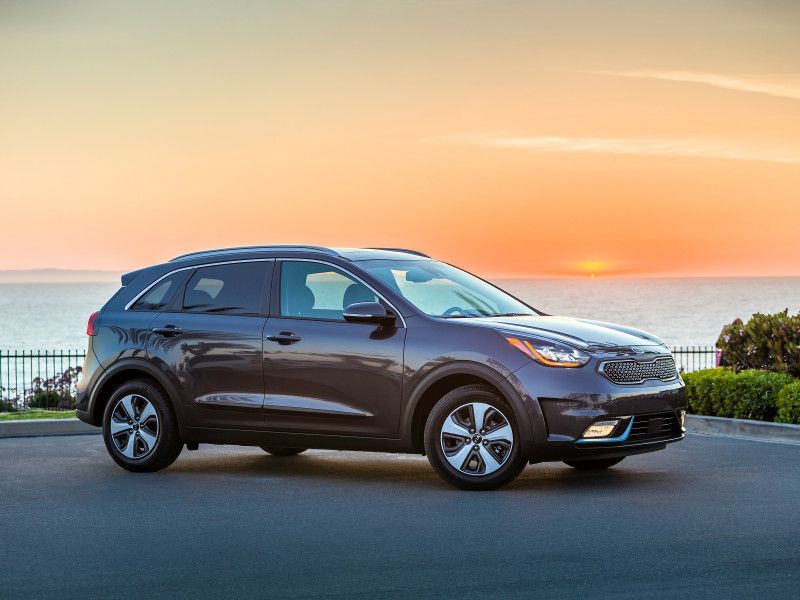
Photo by Kia
2019 Honda HR-V
Honda’s subcompact HR-V is a few inches shorter than the Tucson, yet it stacks up surprisingly well in terms of interior space. In fact, the HR-V has more rear-seat legroom than the larger Hyundai while still offering 58.8 cubic feet of total cargo volume. The Tucson does have roughly 3 more cubic feet, yet only the HR-V has a reconfigurable rear seat that also allows for taller cargo.
Nor can the Tucson match the HR-V’s fuel-economy grades, which are listed at 28 mpg city/34 mpg highway/30 mpg for the base model. On the other hand, the HR-V features much the same infotainment and safety technology as the Tucson.
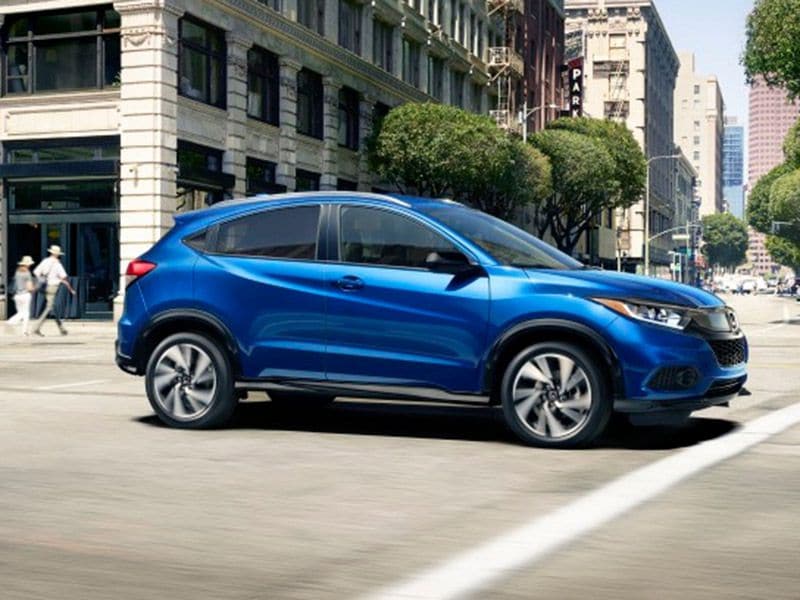
Photo by Honda
2018 Volkswagen Golf SportWagen
There are also Hyundai Tucson competitors to consider from the car side of the industry. Take the 2018 Volkswagen Golf SportWagen. Leveraging its station wagon body style, the SportWagen can handle 66.5 cubic feet of cargo with its rear seat folded. The Tucson is limited to 61.9 cubic feet.
The SportWagen also lives up to its name with a standard five-speed manual transmission and a turbocharged engine that produces 170 horsepower and 199 pound-feet of torque. That’s more torque than you get with either of the Tucson’s powerplants. Additionally, the SportWagen is available with all-wheel drive, just like an SUV, along with a comprehensive package of modern-day technologies. To seal the deal, the SportWagen sports a lower MSRP than a comparable Tucson.
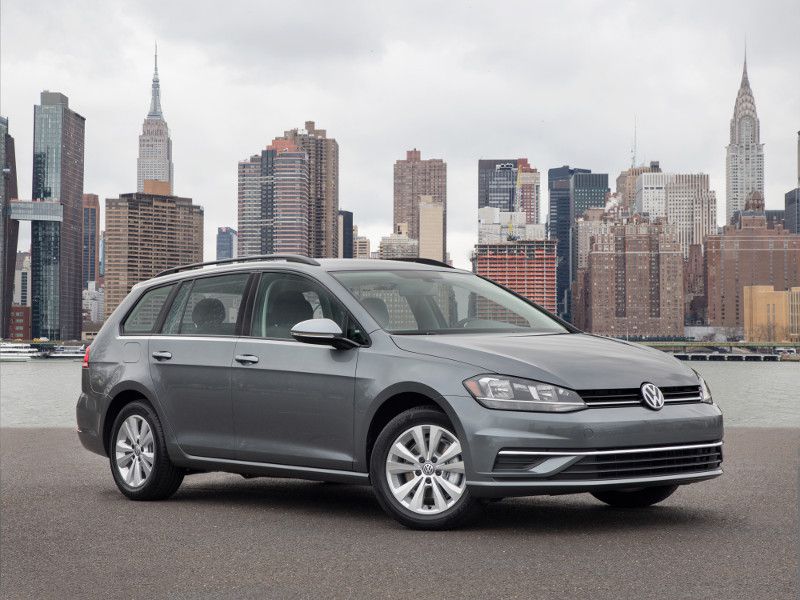
Photo by Volkswagen
2018 Chevrolet Equinox
If you’re wondering which Hyundai Tucson competitor to consider from the Bowtie brand, we recommend the 2018 Chevrolet Equinox. With the Equinox, you’ll reap enough benefits to more than make up for somewhat higher Chevy pricing.
It all starts with the Equinox's bigger footprint, since that allows for more cargo space and more rear legroom than in the Tucson. Chevrolet’s compact SUV also goes beyond the Tucson for standard technology: The Equinox boasts Android Auto/Apple CarPlay, like the Tucson, but Chevy then ups the ante with mobile Wi-Fi — which is missing from the Hyundai product, along with wireless smartphone charging and some other premium goodies.
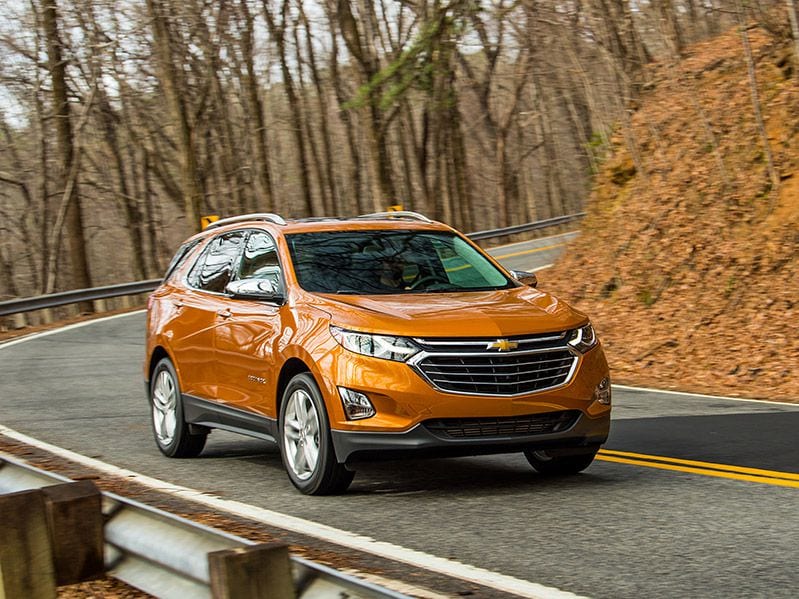
Photo by General Motors
2019 Toyota C-HR
The 2019 Toyota C-HR is one of the most stylish Hyundai Tucson competitors. You can tell that from one glance at the vehicle’s massive, muscular fenders, futuristic-looking front end, and dual rear spoilers. Toyota also bolsters the C-HR’s sporty design with a sports-car-style suspension. To ensure nimble handling, that setup was extensively tested at Germany’s famous Nürburgring racetrack.
Meanwhile, to ensure a high level of driver assistance, the C-HR is equipped with standard safety technologies like adaptive cruise control, automatic emergency braking, a forward-collision warning, a lane-departure warning with steering assistance, and a rearview camera. The C-HR is more efficient and less expensive than the Tucson as well. The key drawback to the Toyota’s radical design: noticeably less cargo space and rear legroom.
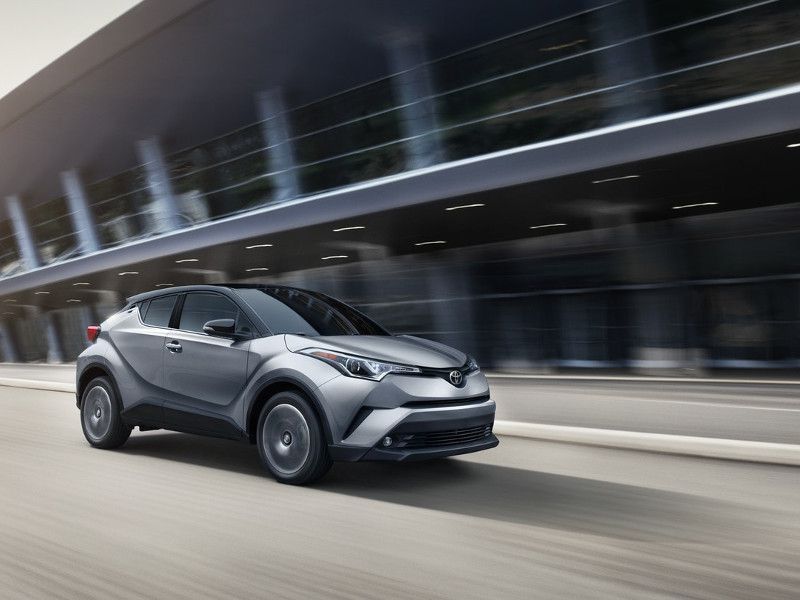
Photo by Toyota